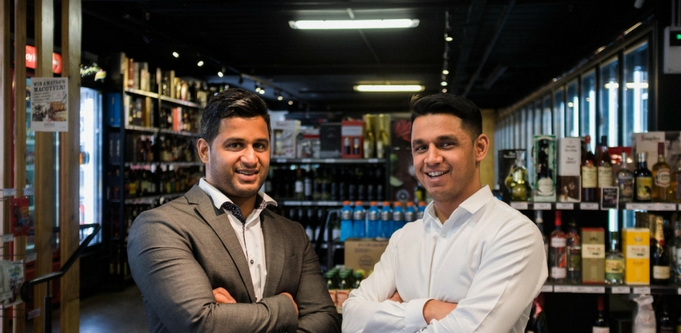
Tipple co-founders Shane Barrington (left) and Ryan Barrington. Source: supplied.
Melbourne-based alcohol delivery startup Tipple has seen its order volumes grow by 54% year-on-year, thanks to a strategy that involves leveraging geographical data to find out exactly what its customers want, while also trying to avoid the classic data traps that can have startups chasing after the wrong metrics.
Launched in November 2015, Tipple is an on-demand alcohol delivery service that has processed over 65,000 orders in the last financial year, and is available in 262 suburbs across Melbourne and Sydney.
Tipple’s customer base has been growing by 15-20% each month, according to co-founder and chief executive Ryan Barrington, who says using geographically segmented sales data to find customer niches and pinpoint future locations for growth is paying off for the startup.
Find your niche
Barrington says Tipple’s method of finding, then targeting, the niche products being consumed by each demographic within its user base is vital in driving the startup’s growth.
“We start with a core, blanket range of [alcohol] offerings, and based on customer activity and the categories customers are searching, we collate the information and find niches,” Barrington says.
Finding out each suburb’s drinking habits says a lot about its core demographics, according to Barrington. For example, Tipple data has shown that Fitzroy in Melbourne’s inner north has the largest customer demand for craft beers and organic wines, while the likes of Elwood and St Kilda record the most demand for Pinot Noir on the Tipple app.
Using forecasted sales data — data that predicts future sales trends based on current metrics — also allows Tipple to hone in on potential high-growth suburbs to offer delivery to. It is this approach that Barrington says has seen a 54% year-on-year increase in the startup’s order volume.
“A perfect example of this is [the Melbourne suburb of] Canterbury, which we are opening as a new delivery zone in two weeks’ time,” Barrington explains.
“For the last few months we’ve noticed an increasing order trend in surrounding suburbs, in which we’ve seen about 68% of overall order growth in beer and on average about 46% [overall order growth] in wine. Using this insight we’ve identified Canterbury as a high growth potential area and will roll out across the suburb,” Barrington says.
Barrington says Tipple analyses data “week on week” to remodel its metrics and continue to stay responsive to changes in customer behaviour. In the future, the startup plans to offer this purchasing data to its alcohol suppliers to provide insights into which demographics and geographical locations are purchasing which products.
How startups can avoid data traps
While Tipple has leveraged its data to drive customer onboarding and boost sales, Barrington warns there are pitfalls startup founders can fall in to if they do not have a structured approach to using data.
“You can get lost in your data — there’s so much data and it’s exciting to play with,” Barrington says. Often startups “learn a lot about something but don’t know how to use it effectively”, he says.
To encourage effective use of data, Barrington says founders should “sit back and look at what you want to achieve” by starting with a “high-level goal” that pinpoints a specific percentage, goal or objective they want to achieve in their data. Barrington then encourages founders to focus on that high-level goal, rather than “dig deeper to find suitable metrics within that data”.
Barrington also warns startups against making assumption based on anomalies in data, suggesting all figures should be compared against the company’s overall growth statistics to check they match up.
“It’s very easy to find a couple of anomalies in your data and make assumptions around that,” Barrington warns.
“Validate your data by comparing it to overall [company] statistics, not by making assumptions based on one specific query that you run,” he says, explaining that often bulk-orders from single customers on the Tipple platform, for example, can throw off accurate sales metrics.
Tipple now has its sights set on expansion by consolidating its presence in Melbourne, extending its footprint further in to New South Wales by securing more partnerships with alcohol distributors, and is looking to offer its services in Queensland in the coming months.
Follow StartupSmart on Facebook, Twitter, LinkedIn and iTunes.


COMMENTS
SmartCompany is committed to hosting lively discussions. Help us keep the conversation useful, interesting and welcoming. We aim to publish comments quickly in the interest of promoting robust conversation, but we’re a small team and we deploy filters to protect against legal risk. Occasionally your comment may be held up while it is being reviewed, but we’re working as fast as we can to keep the conversation rolling.
The SmartCompany comment section is members-only content. Please subscribe to leave a comment.
The SmartCompany comment section is members-only content. Please login to leave a comment.